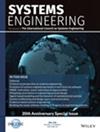Systemic innovation for countering violent radicalization: Systems engineering in a policy context
IF 1.6
3区 工程技术
Q4 ENGINEERING, INDUSTRIAL
引用次数: 0
Abstract
This paper brings a systems engineering approach to policymaking in the context of violent radicalization. We test strategies to combat terrorism under the premise that violent radicalization is a complex system of social contagion resulting in terrorism. We built a simulation using DIME‐PMESII military standards to replicate a terror contagion occurring over 10 years in both physical and online environments under optimal, realistic, and worst‐case scenarios. We then tested antiterrorism, counterterrorism, and counter radicalization strategies as policy experiments in this simulation. These experiments identified four key dynamics relevant for developing policies to reduce terrorism. First, most well‐known policies are ineffective in containing terrorism driven by social contagion. Second, strategies generating backlash can become worse than doing nothing at all. Third, perceived grievance determines the carrying capacity of terrorism in a system, allowing disrupted networks to regenerate. Fourth, variable public support may result in sharp secondary waves of violence under certain contingencies. Experimenting with our model, we explore effective ways to address the violent radicalization problem.打击暴力激进化的系统创新:政策背景下的系统工程
本文将系统工程方法引入暴力激进化背景下的政策制定。我们以暴力激进化是导致恐怖主义的复杂社会传染系统为前提,测试了打击恐怖主义的策略。我们使用 DIME-PMESII 军事标准建立了一个模拟系统,在最佳、现实和最坏情况下,在物理和网络环境中复制了 10 年内发生的恐怖传染。然后,我们将反恐、反恐怖主义和反激进化战略作为政策实验在该模拟中进行了测试。这些实验确定了与制定减少恐怖主义政策相关的四个关键动态。首先,大多数众所周知的政策都无法有效遏制由社会传染驱动的恐怖主义。第二,产生反弹的策略可能比什么都不做更糟糕。第三,感知到的不满决定了恐怖主义在一个系统中的承载能力,允许被破坏的网络再生。第四,在某些情况下,公众支持率的变化可能会导致急剧的二次暴力浪潮。通过实验我们的模型,我们探索了解决暴力激进化问题的有效方法。
本文章由计算机程序翻译,如有差异,请以英文原文为准。
求助全文
约1分钟内获得全文
求助全文
来源期刊

Systems Engineering
工程技术-工程:工业
CiteScore
5.10
自引率
20.00%
发文量
0
审稿时长
6 months
期刊介绍:
Systems Engineering is a discipline whose responsibility it is to create and operate technologically enabled systems that satisfy stakeholder needs throughout their life cycle. Systems engineers reduce ambiguity by clearly defining stakeholder needs and customer requirements, they focus creativity by developing a system’s architecture and design and they manage the system’s complexity over time. Considerations taken into account by systems engineers include, among others, quality, cost and schedule, risk and opportunity under uncertainty, manufacturing and realization, performance and safety during operations, training and support, as well as disposal and recycling at the end of life. The journal welcomes original submissions in the field of Systems Engineering as defined above, but also encourages contributions that take an even broader perspective including the design and operation of systems-of-systems, the application of Systems Engineering to enterprises and complex socio-technical systems, the identification, selection and development of systems engineers as well as the evolution of systems and systems-of-systems over their entire lifecycle.
Systems Engineering integrates all the disciplines and specialty groups into a coordinated team effort forming a structured development process that proceeds from concept to realization to operation. Increasingly important topics in Systems Engineering include the role of executable languages and models of systems, the concurrent use of physical and virtual prototyping, as well as the deployment of agile processes. Systems Engineering considers both the business and the technical needs of all stakeholders with the goal of providing a quality product that meets the user needs. Systems Engineering may be applied not only to products and services in the private sector but also to public infrastructures and socio-technical systems whose precise boundaries are often challenging to define.
 求助内容:
求助内容: 应助结果提醒方式:
应助结果提醒方式:


